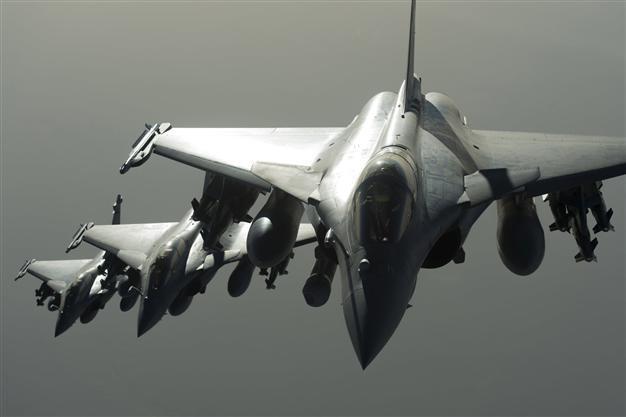US, Russia could sign Syria air-safety pact in 'coming days': Official
WASHINGTON - Agence France-Presse

French Army Rafale fighter jets are seen in flight during an operation against Syria, in this handout photo distributed by the French Defense Audiovisial Communication and Production Unit (ECPAD) and realeased September 27, 2015. Reuters Photo
The United States and Russia could soon sign a pact establishing safety protocols in the skies above Syria as both powers carry out separate bombing campaigns, a US defense official said on Oct. 14.
"We are nearing completion of a memorandum of agreement that would set up procedures to enhance air safety," the official said, speaking on condition of anonymity. "It could be signed and implemented in the coming days."
The official's comments came shortly after Russia and the United States held a third round of video talks to decide rules so pilots don't inadvertently fly into each other.
"Progress was made during the discussions, which were professional and focused narrowly on the implementation of specific safety procedures," Pentagon spokesman Captain Jeff Davis said.
The US-led coalition has for more than a year been conducting regular drone and plane strikes in Syria and Iraq, targeting the Islamic State of Iraq and the Levant (ISIL).
That mission got much more complex on September 30, when Russia launched its own military campaign to support President Bashar al-Assad. Moscow claims it is striking ISIL and other "terrorists."
Further complicating matters, Russia last week fired cruise missiles into Syria from the Caspian Sea.
The missiles typically fly at much lower altitudes than jets, but Pentagon officials were nonetheless distressed that Russian bombs were in the same air space as coalition planes.
So far, there have been no major incidents in the Syrian skies, though Pentagon officials said coalition planes have had to change course to avoid being in the same space as Russian jets.
And on Oct. 13, Colonel Steve Warren, the spokesman for the US-led coalition, told reporters that coalition and Russian planes came close enough to establish visual contact.
"There's always going to be some risk if there are uncoordinated actors in the battle space," he said.
Officials say the so-called "deconfliction" talks come down to some basic operating procedures, including which language Russian and American pilots will use for communication, the choice of radio frequency for distress calls and the altitude at which warplanes will operate.
